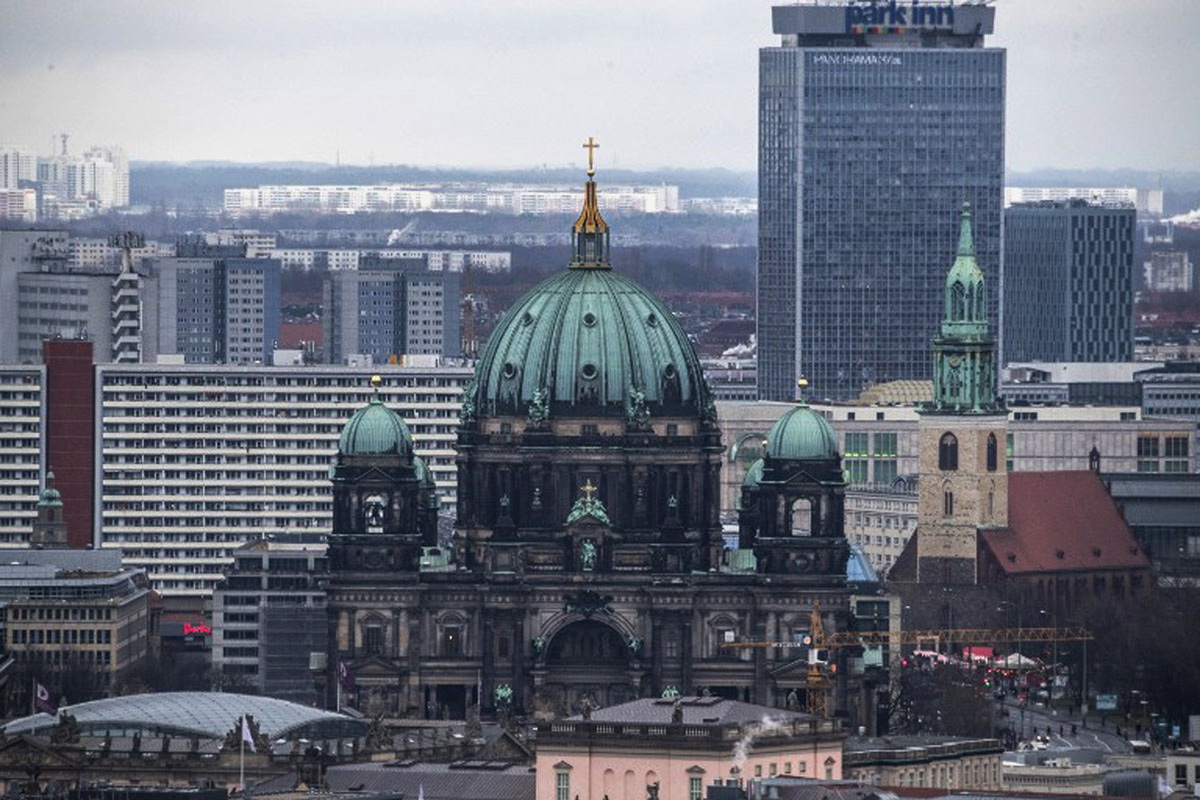BERLIN — A city of hipsters, Berlin only looks chaotic — behind the scenes, it runs like a clock.
Germany has the world’s fourth-largest economy, so one might expect its capital, Berlin, with 3.6 million people, to be an ultramodern metropolis. But it’s not.
As the city comes into view from the train window, one sees a run-down, industrial landscape of angular buildings that doesn’t seem to differ drastically in appearance from the ones of Kyiv, Kharkiv and Dnipro. But there is much more graffiti on building walls — both awesome and awful — and stickers covering even road signs.
The city center is similar: broad streets and angular buildings, as well as the occasional old museum and church. But while Berlin is not a feast for the architectural eye, the city has other advantages to offer, including well organized infrastructure, a lively nightlife and cosmopolitan cuisine.
Food
Oddly, finding a place with the genuine German cuisine in Berlin is not easy. Instead, the city is packed with Indian, Vietnamese, Mexican, and Turkish places, all of which are of much better quality than the ones in Kyiv.
So Berlin is a perfect place to sample an unfamiliar cuisine. Most of the ubiquitous foreign cafes and restaurants are run by foreigners, which gives one confidence that the cuisine is authentic. And the generous portions are sold at reasonable prices.
For instance, a large Mexican burrito with guacamole and rice on the side costs about 9 euros. A huge bowl of Vietnamese Pho Bo, with a shot of rice vodka, costs 10 euros. An Indian chicken curry with rice and a glass of beer costs roughly 13 euros.
Almost everywhere on streets, there are Turkish stores selling authentic baklava (layered pastry with honey and crushed nuts) for some 1.5 euros a portion — a delicious and inexpensive treat. There are also small kiosks selling döner kebabs and falafels for 3–5 euros — perfect for a late-night snack.
Drinking alcohol on the street is permitted in Germany, and people are allowed to smoke in restaurants and concert halls, so look for non-smoking rooms if you don’t smoke, and vice versa.
Germany has several traditional foods worth bringing home. One of them is Stollen, a fruit bread of nuts, spices, and dried or candied fruit. A large loaf costs 4 euros in supermarket chains like Lidl or Rewe. However, in a nod to the country’s Protestant past, stores often don’t work on Sundays.

A view of Berlin Cathedral on Museum Island, a UNESCO World Heritage Site that hosts the biggest Berlin’s museums and art galleries, including the Alte Nationalgalerie, Pergamonmuseum, and Altes Museum. (AFP)
Museums and galleries
Berlin’s galleries and museums are conveniently located in a single area called Museum Island, which is itself a UNESCO World Heritage Site.
The easiest way to get there is to take a suburban-line train to S Hackescher Markt station. Then look for the green dome of the immense Berlin Cathedral. It is located across a small pedestrian bridge on the Museum Island and can be a good landmark for navigating around the other museums.
The admission fee for galleries and museums is about 10 euros; and 7 euros for the Berlin Cathedral. If you happen to be a journalist, show a press pass and entry is free of charge.
Sightseeing
The city’s two must-sees are the Brandenburg Gate and the Reichstag building.
Take a suburban-line train and get off at the Brandenburger Tor station, which is located just next to the famous gate.
After taking a selfie, move on to the Reichstag building, which is just five minutes away through the State Park. The Reichstag building, including its panoramic glass dome, is open to visitors and free of charge, but one has to book a visit a couple of days in advance via the Reichstag’s website. Tours are included, but ones in English are only available on Tuesdays.
Transport
Even in rush hour Europe’s second most populous city after London is much less busy than Kyiv. Buses, underground and suburban-line trains are almost always on time and half empty in this 3.7 million people city.
Nobody checks tickets in Berlin when one gets on public transport. There are no ticket punches in buses and no turnstiles in the metro or the suburban-line stations. But that doesn’t mean that tickets aren’t necessary.
There are controllers who check tickets from time to time. If caught with no valid ticket, fare-dodgers will be fined 60 euros.
Berlin sells single tickets for all the means of transport in machines installed at every station. One-day tickets cost 7.7 euros and are valid across all three of Berlin’s transport zones, including zone C, where the two largest airports are located.
There are also one-week tickets that cost 30 euros, and one-way tickets for 3.5 euros.
If you stay in Berlin for more than five days, save money by buying a one-week ticket at a station near the airport for zones A and B; and then buy an extension ticket for 1.6 euros to travel out of zone C.
It takes about 80 minutes and one change of train to get from the Schönefeld Airport, where popular low cost airlines like easyJet and Ryanair are based, to the western side of Berlin.
Taxis, including Uber cars, from the Schönefeld Airport to western part of Berlin will cost 45–55 euros, but take half the time of the train ride. Taxis for early morning departures should be booked in advance. One convenient taxi service is called Suntransfers, but a taxi ride with this firm has to be booked a day in advance and no later than 9 p. m., as they stop taking orders when the working day ends in Germany.
How to get to Berlin: take a round trip from Kyiv to Berlin by airline Ryanair for 55 euros.
Where to stay: rent an entire apartment through Airbnb for 60 euros a night.
